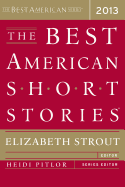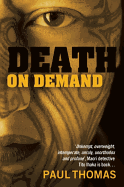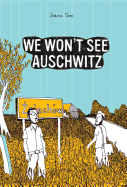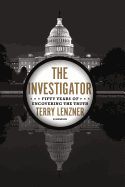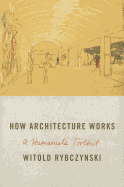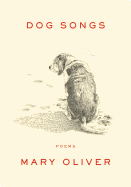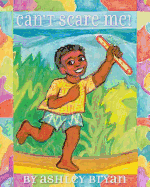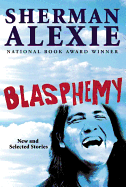 Blasphemy: New and Selected Stories by Sherman Alexie (Grove Press, $17)
Blasphemy: New and Selected Stories by Sherman Alexie (Grove Press, $17)
In this superb collection of 30 short stories by National Book Award-winner Sherman Alexie (The Absolutely True Diary of a Part-Time Indian), many characters suffer mightily. Thanks to Alexie's singular sense of humor and reverence for the historical greatness in the Indian way of life, the stories rise above ennui and sadness with the touch of a poet: "It was so quiet, a reservation kind of quiet, where you can hear somebody drinking whisky on the rocks three miles away." Blasphemy reveals an artist in full command of his material and style, able to astonish and move us in story after story.
Christmas in Cornwall by Marcia Willet (St. Martin's Griffin, $15.99)
An Anglican convent in decline brings together a host of characters in Marcia Willett's Christmas in Cornwall, a novel that explores the implications of loss, the complexities of family and friendship and the need to feel loved. She has written a perfectly balanced ensemble piece, a gentle, moving story about faith and trusting in God's presence via the generosity of strangers, the love of friends and family and the miracle of Christmas.
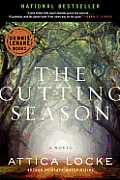 The Cutting Season by Attica Locke (Harper Perennial, $15.99)
The Cutting Season by Attica Locke (Harper Perennial, $15.99)
Attica Locke's debut novel, Black Water Rising, garnered prize nominations and a devoted readership. The Cutting Season is just as good. It's set in Louisiana on Belle Vie, a former plantation--now hosting weddings and historical reenactments--that has been anything but a "beautiful life" for many of its inhabitants over the centuries, from slaves and freed blacks to the white family that owns it today. Now it's the scene of a migrant worker's murder, which drives plantation manager Caren Gray to investigate, save a man falsely accused and examine her own life.
The Heart Broke In by James Meek (Picador, $16)
James Meek's smart and generous look at contemporary morality is the kind of novel to press into the hands of someone who asks, "Why read fiction?" Set mainly in Britain, Meek's novel revolves around brother and sister Ritchie and Bec Shepherd. The questions raised by their lives have the ring of soap opera, but Meek's wise and occasionally humorous treatment is anything but, as he steers his troubled protagonists through what Bec thinks of as the "vast, alien moral landscape," all the while relishing the pleasures of their outwardly successful lives.
Ratlines by Stuart Neville (Soho Crime, $15.95)
"Ratlines" refers to the underground network that helped Nazis escape Germany after World War II, one of which led to the Republic of Ireland, which remained neutral during the war. The year is 1963: President Kennedy is planning a visit to his ancestral country, and Nazi war criminals living there are being murdered. The nation's Minister for Justice orders Lt. Albert Ryan, an agent in the Directorate of Intelligence, to investigate the killings. In doing so, Ryan finds that the lines between right and wrong are muddled, and the only moral compass he can follow is his own.
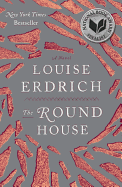 The Round House by Louise Erdrich (Harper Perennial, $15.95)
The Round House by Louise Erdrich (Harper Perennial, $15.95)
Louise Erdrich's novel takes readers inside the mind of an Ojibwe man, who looks back as an adult on a formative experience of youth. When Joe Coutts's mother is raped, she knows who attacked her, but is unclear exactly where it took place, leaving unresolved the question of which law enforcement agency has jurisdiction over the crime. The tribal legal system that Joe studied and respected through his father, a tribal judge, has failed. This horror changes his life, and the only thing Joe knows for certain is that he must do something, although he does not realize what the pursuit of justice will do to him and his family.
The Old Ways: A Journey on Foot by Robert MacFarlane (Penguin Books, $18)
Robert Macfarlane's lyrical account of walking ancient paths stretches to encompass poetry, cartography, sailing, science, birds, beasts, mountain climbing, folklore and many other topics, and he proves a knowledgeable and fascinating guide in every aspect. He traces dozens of ancient paths on land and sea, beginning in Cambridgeshire, England, and eventually stretching from the Outer Hebrides to the Himalayas. He renders each place and its inhabitants (human and otherwise) in precise, vivid detail, while exploring how outer landscapes shape our inner journeys, both as we walk a landscape and long after we have left it.
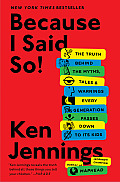 Because I Said So!: The Truth Behind the Myths, Tales and Warnings Every Generation Passes Down to Its Kids by Ken Jennings (Scribner, $15)
Because I Said So!: The Truth Behind the Myths, Tales and Warnings Every Generation Passes Down to Its Kids by Ken Jennings (Scribner, $15)
Ken Jennings, who holds the record for the longest winning streak on Jeopardy!, is a quintessential trivia junkie with a knack and passion for disseminating nerdy truths. In Because I Said So!, he sets about debunking or proving 125 of the white lies parents innocently pass onto their offspring, applying scientific research to evaluate each one, like the myth of the poisoned Halloween candy (absolutely no reported instances, ever). Fast-talking and witty.
Sugar in the Blood: A Family's Story of Slavery and Empire by Andrea Stuart (Vintage, $16.95)
In this absorbing, evocative history of slavery in Barbados, Andrea Stuart passionately and cogently argues that sugar--"more than any other commodity in human history"--has "shaped our tastes, transformed our landscape and influenced our politics." For Stuart, the story of sugar is complex, painful and profoundly personal: like many others with Caribbean roots, she is descended from a wealthy sugar plantation owner and a female slave. Stuart has a historian's respect for truth, an economist's skill for incisive analyses and a novelist's flair for color and detail.
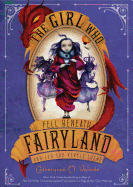 The Girl Who Fell Beneath Fairyland and Led the Revels There by Catherynne M. Valente, illus. by Ana Juan (Square Fish, $7.99, ages 10-14)
The Girl Who Fell Beneath Fairyland and Led the Revels There by Catherynne M. Valente, illus. by Ana Juan (Square Fish, $7.99, ages 10-14)
In The Girl Who Circumnavigated Fairyland in a Ship of Her Own Making, September--one of the best heroines to enter the worlds of fantasy in the last few years--made an impulsive and heartfelt decision to remove her own shadow, and it seemed to be a fine reflection on her character and little more. In this sequel, Valente forces September to grapple with the consequences of this choice after she finds her way back into Fairyland. The settings and characters will delight readers, with strong writing that will appeal to adults as much as children.
Minnie McClary Speaks Her Mind by Valerie Hobbs (Square Fish, $6.99, ages 9-13)
If you're reading this, likely you once had a teacher who changed your life. Minnie McClary Speaks Her Mind celebrates one of those teachers, Miss Marks, as well as the girl who changes the most as a result. As tensions mount from a group of parents working to oust Miss Marks, as well as escalating bullying and racism, Minnie finds herself torn between her need to act in the face of injustice and her fear of being embarrassed. She realizes she must figure out the answers to some of Miss Marks's questions and say them out loud.
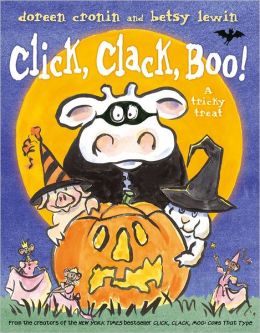 Stephen Savage uses his trademark arresting graphic images to count down in Ten Orange Pumpkins, as a mummy and others make the pumpkins disappear one by one. Farmer Brown may not fancy Halloween, but his animals sure do, in Click Clack Boo! by Doreen Cronin. Betsy Lewin's watercolors portray the cow in a skeleton's cloak and the chicks dressed as ghosts; Duck (we won't give away his costume) precipitates the denouement. The stars of Five Little Monkeys Trick-or-Treat by Eileen Christelow pull a prank on Lulu, their baby-sitter, by switching their costumes, but the trick nearly costs them their treat.
Stephen Savage uses his trademark arresting graphic images to count down in Ten Orange Pumpkins, as a mummy and others make the pumpkins disappear one by one. Farmer Brown may not fancy Halloween, but his animals sure do, in Click Clack Boo! by Doreen Cronin. Betsy Lewin's watercolors portray the cow in a skeleton's cloak and the chicks dressed as ghosts; Duck (we won't give away his costume) precipitates the denouement. The stars of Five Little Monkeys Trick-or-Treat by Eileen Christelow pull a prank on Lulu, their baby-sitter, by switching their costumes, but the trick nearly costs them their treat.


.jpeg)
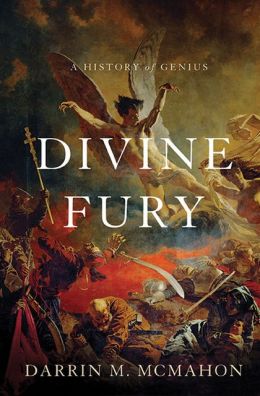 You tell of Benjamin Franklin's mix of unease and pride at finding himself a "genius celebrity" and his punning on how, since dolls bearing his likeness were popping up everywhere, he was being "i-doll-ized." Is there anything similar to this "cult of genius" in modern life?
You tell of Benjamin Franklin's mix of unease and pride at finding himself a "genius celebrity" and his punning on how, since dolls bearing his likeness were popping up everywhere, he was being "i-doll-ized." Is there anything similar to this "cult of genius" in modern life?

 The Round House
The Round House

